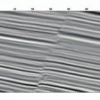Free Online Productivity Tools
i2Speak
i2Symbol
i2OCR
iTex2Img
iWeb2Print
iWeb2Shot
i2Type
iPdf2Split
iPdf2Merge
i2Bopomofo
i2Arabic
i2Style
i2Image
i2PDF
iLatex2Rtf
Sci2ools
91
Voted
CVPR
2004
IEEE
2004
IEEE
Automatic Method for Correlating Horizons across Faults in 3D Seismic Data
Horizons are visible boundaries between certain sediment layers in seismic data, and a fault is a crack of horizons and it is recognized in seismic data by the discontinuities of horizons layers. Interpretation of seismic data is a timeconsuming manual task, which is only partially supported by computer methods. In this paper, we present an automatic method for horizon correlation across faults in 3d seismic data. As automating horizons correlations using only seismic data features is not feasible, we reformulated the correlation task as a non-rigid continuous point matching problem. Seismic features on both sides of the fault are gathered and an optimal match is found based on geological fault displacement model. One side of the fault is the floating image while the other side is the reference image. First, very prominent regions on both sides are automatically extracted and a match between them is found. Sparse fault displacements are then computed for these regions and they are use...
Computer Vision | CVPR 2004 | Fault Displacement Model | Geological Fault Displacement | Seismic Data | Seismic Data Features | Seismic Image Interpretation |
| Added | 12 Oct 2009 |
| Updated | 29 Oct 2009 |
| Type | Conference |
| Year | 2004 |
| Where | CVPR |
| Authors | Fitsum Admasu, Klaus D. Tönnies |
Comments (0)

